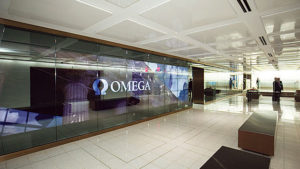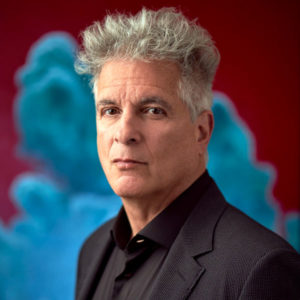
Omega Healthcare executives expect operator performance to be “significantly affected” for the foreseeable future after reporting an 8% decline in overall occupancy since February.
“Although occupancy levels have appeared to stabilize, it remains uncertain when occupancy will return to pre-COVID levels,” CEO C. Taylor Pickett said during a second-quarter earnings call Thursday morning.
Meanwhile, Sabra Health Care REIT CEO Rick Matros cited numerous optimistic indicators at his company’s second quarter earnings call, despite also showing an 8% decline in skilled nursing occupancy since the pandemic was declared.
Increasing operating expenses
Omega reported that operator expenses have increased an average of $18 per patient day from February through July in addition to the drop in occupancy thanks to the coronavirus pandemic.
There have been more than 6,100 confirmed COVID-19 cases in residents and staff members within 415 of Omega’s facilities as of July 30. Cases at facilities peaked in mid June before beginning to drop later in the month. Now, the company is seeing another increase in cases, particularly in Texas and Florida.

“We are hopeful that expenses will moderate going forward depending on the level of future outbreaks. It is important to note that the very ability in both occupancy and operating expenses is closely correlated to the number of confirmed COVID residents within a given facility,” Chief Operating Officer Daniel Booth said.
Despite the challenges, Pickett said the company was very pleased with its second-quarter results. Executives reported that the company collected 99% of contractual rent and mortgage payments for the month of July.
Net income for the second quarter totaled $102 million on revenues of $256.4 million. That compares to the second quarter of 2019, when the company reported a net income of $75.7 million on revenues of $225.5 million.
Pickett also noted that federal and state governments have “provided meaningful ongoing essential regulatory and financial support to the skilled nursing facility industry that has allowed operators to fund payrolls and pay vendors in spite of significant declines in occupancy and increasing costs.”
Matros likes the mix
Despite skilled nursing occupancy declines of more than 800 basis points since the pandemic began, Sabra Health Care REIT CEO Rick Matros gave a generally optimistic forecast Thursday during a second quarter company earnings call.

There was no disguising the fact that the company’s net income had plummeted to $29.6 million during the quarter, far below the $83.7 million registered for the same quarter a year earlier. Revenues overall were $153.9 million for the quarter, compared to $219.4 million a year earlier.
But Matros noted that slight gains in Medicare mix at transitional care and other facilities, and a positive outlook for nursing facility acquisition prospects are buoying factors.
Sabra leaders, however, also expressed skepticism about valuations for potential assisted living acquisitions.
Federal regulators’ decision to issue a 2.2% market basket update and make no change to Patient-Driven Payment Model rates for fiscal 2021 are both “really good news,” Matros said. He added that there is still a lot of relief funding available and that the company is optimistic about potential prospects in “Stimulus 4,” as he called the relief package currently being negotiated in Congress.
Sabra facilities also have done well fighting back virus outbreaks, he said. Of 202 facilities that at some point had COVID-positive cases, 113 have completely recovered.
“It feels like we’ve kind of been through the worst of it,” Matros said. “There could be a little bit more, but we don’t think it’s going to be material.
“Certainly there will be some risk of more facilities having positives,” he added. “But we’re not concerned about having facilities with big breakouts where you have to shut down facilities and all that. Facilities have been able to isolate people and still have admissions.”
“It’s pretty hard to prognosticate,” he quickly added.
Other reasons for optimism, Matros said, include the fact that no Sabra tenant has been delinquent with rent or asked for a deferment. Move-in and occupancy rates had been inching up until outbreaks throughout the Sunbelt flared up in mid-summer.
Going to market
The acquisition pipeline might be active in the near future, Matros allowed.
“We’re looking at everything. From a pricing perspective, we definitely see ourselves getting some skilled nursing done,” he explained. “On the seniors housing side, we’re just not seeing realistic pricing out there for the most part at this point. Unlike skilled nursing, that’s really going to be a tough shot.”
Although price gouging is not as severe as before, Matros also said that concerns about supply levels continue. Gloves are currently the toughest order to fill, followed by gowns, he said.
It was nine to 10 weeks into the pandemic before FEMA even sent personal protective equipment to nursing homes and “as much as half of it was flawed,” Matros said, noting that providers seemed to garner sympathetic media coverage out of that. In general, he credited a massive public relations push by caregiver associations and leaders for helping the profession’s image during the public health emergency.
Liability is king
In looking ahead to Congress’ ongoing talks about another stimulus bill, Matros said that liability is the big issue.
“Despite what opposing camps say, the industry is not lobbying for blanket immunity, regardless of real negligence,” he explained. “Those people should always be taken to task. The mere fact you had COVID in a facility doesn’t mean that you should be sued. That’s really what the focus is.”
There are 29 states that have some form of limitations on liability “so that’s going to be helpful,” he added. “But having it at the federal level is what we really want. The dialog has been really productive so I think we feel pretty comfortable with getting stimulus dollars.”





